Wutopia Lab wraps Chinese arts centre in translucent mesh
Translucent mesh informed by mosquito nets wraps the forms of Flickering Peak, an arts centre in Hainan, China, by architecture studio Wutopia Lab.
Located in an area known as Coffee Village in Wanning, the project involved completing a multipurpose arts centre that had been partially constructed, with its basement and structural frame already in place.
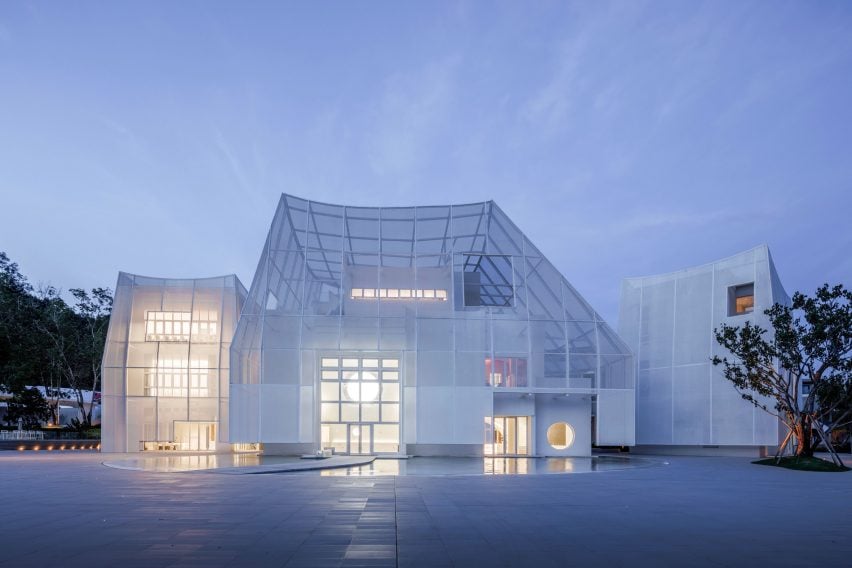
After the client parted ways with the previous architect, Shanghai-based Wutopia Lab was brought on to transform the structure into an architectural landmark for the area that would also respond to its tropical climate.
Flickering Peak's design features three blocks designed as "mountains", organised around a small pool of water crossed by a walkway. This draws on Hainan island province's relationship to both mountains and the sea.
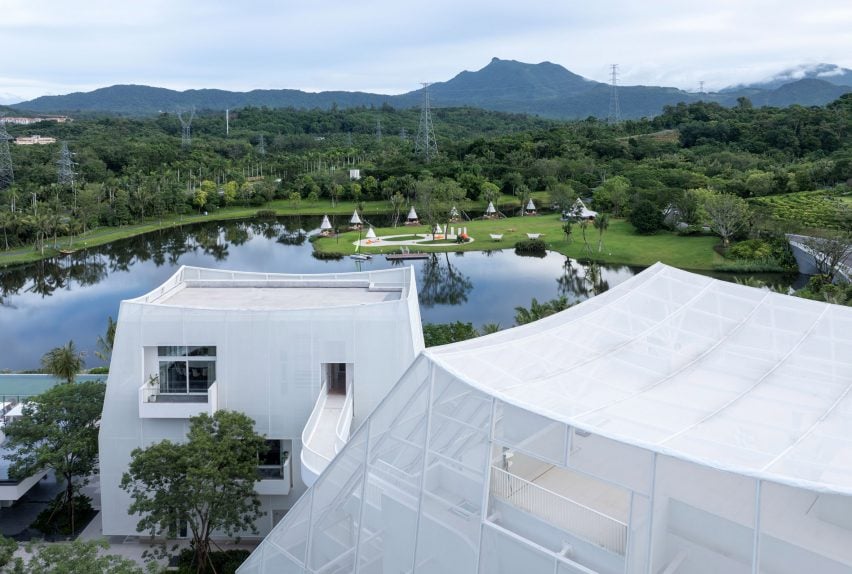
"I drew on a concept I had used before, called 'One Pool, Three Mountains'," Wutopia Lab founder and chief architect Yu Ting told Dezeen.
"The existing structural system's limitations prevented us from creating more diverse forms, so in the end, it could only be designed as a box," he added.
"The challenge was how to align this concept with the three buildings and how to reconcile the shape of the mountains with the original boxy structure."
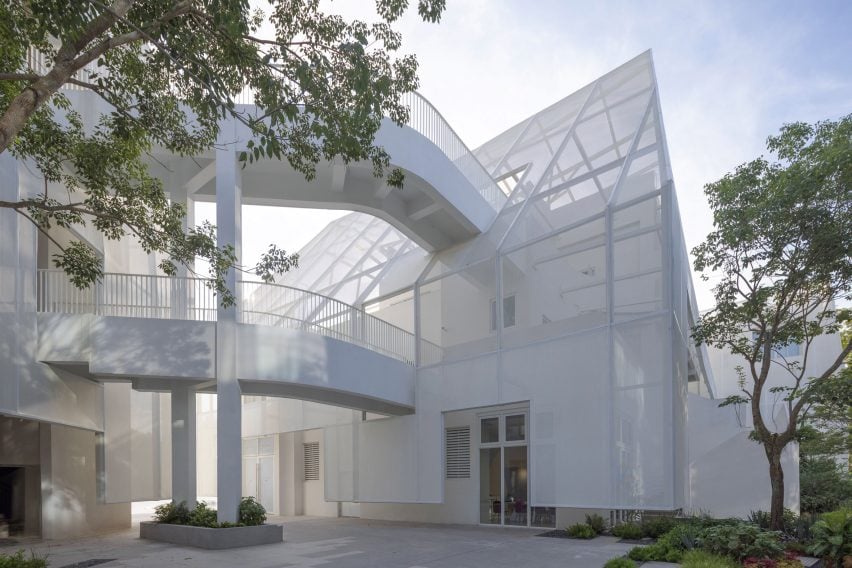
To transform these box-like structures into abstracted mountain forms, Wutopia Lab covered them in a thin steel frame over which sheets of perforated mesh are stretched.
This membrane shelters a series of external terraces on top of the blocks, which the studio said reference "grey spaces" found in traditional Chinese homes that are covered with gauze to defend against mosquitoes.
"In the summer, wealthy people would create a shaded 'grey space' in front of their courtyards and buildings by setting up a gauze canopy, creating a space that seamlessly blends indoor and outdoor areas without the nuisance of mosquitoes," explained Ting.
"I transformed the climatic boundary into terraces – abstract mountains – creating a large number of outdoor platforms," he added.
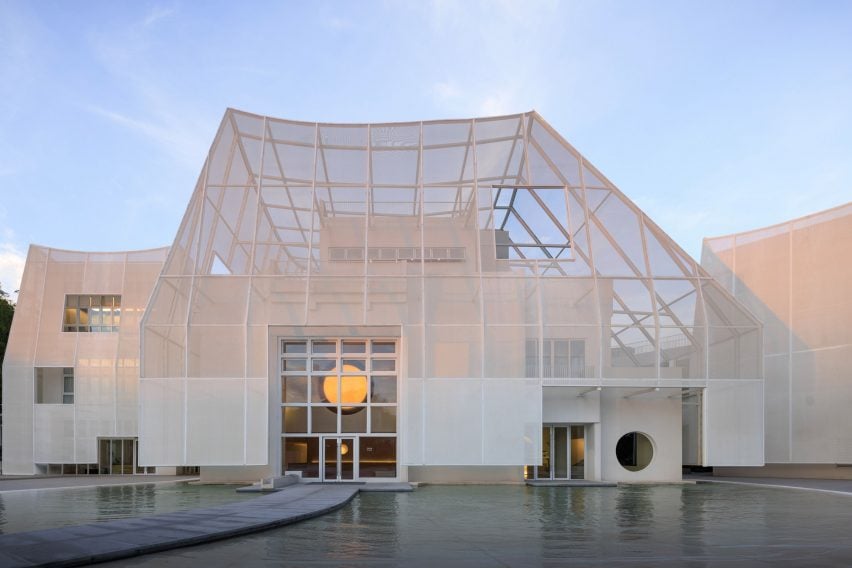
The central building of Flickering Peak contains the main events area, which is organised around a circular space with amphitheatre-style marble seating and a large staircase.
A vaulted ceiling, described by the studio as "reminiscent of a cave", frames this area, punctured by circular openings fitted with colour-changing lights.
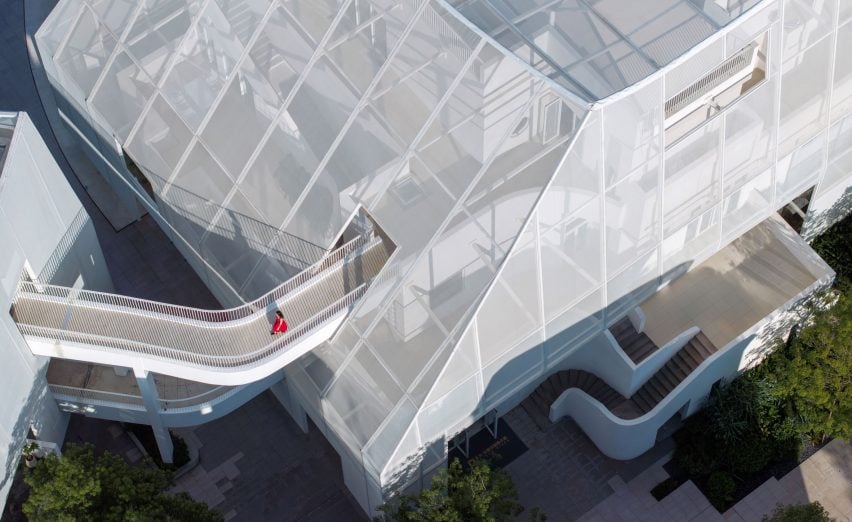
External bridges on either side of the central volume connect to the smaller independent buildings on either side, which contain an office to the west and a reception and dining area to the east.
"The east and west auxiliary buildings are the secondary mountains, and the main building is the primary mountain," explained Ting.
"Since the annexes are meant to support the main building, they need to be connected," he continued. "Given the mountain imagery we've created, we decided to link the three buildings by constructing bridges over the 'mountains', a common model in traditional Chinese architecture."
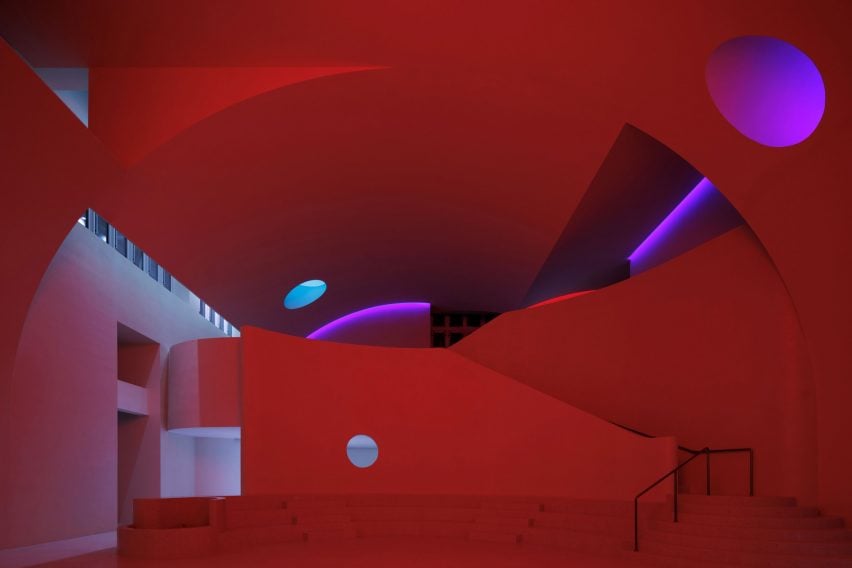
At night, the translucent membranes create a lantern-like effect when Flickering Peak is illuminated from within, reflecting in the pool of water.
Translucent membranes also featured in Wutopia Lab's recent transformation of a former industrial yard in Shanghai, which now functions as a mixed-use cultural space with a series of wave-shaped structures.
Other mesh-covered buildings featured on Dezeen include a red-roofed community pavilion in Sydney by Sam Crawford Architects and an exhibition space in Shenzhen by Trace Architecture Office.
The photography and video are by Guowei Liu.